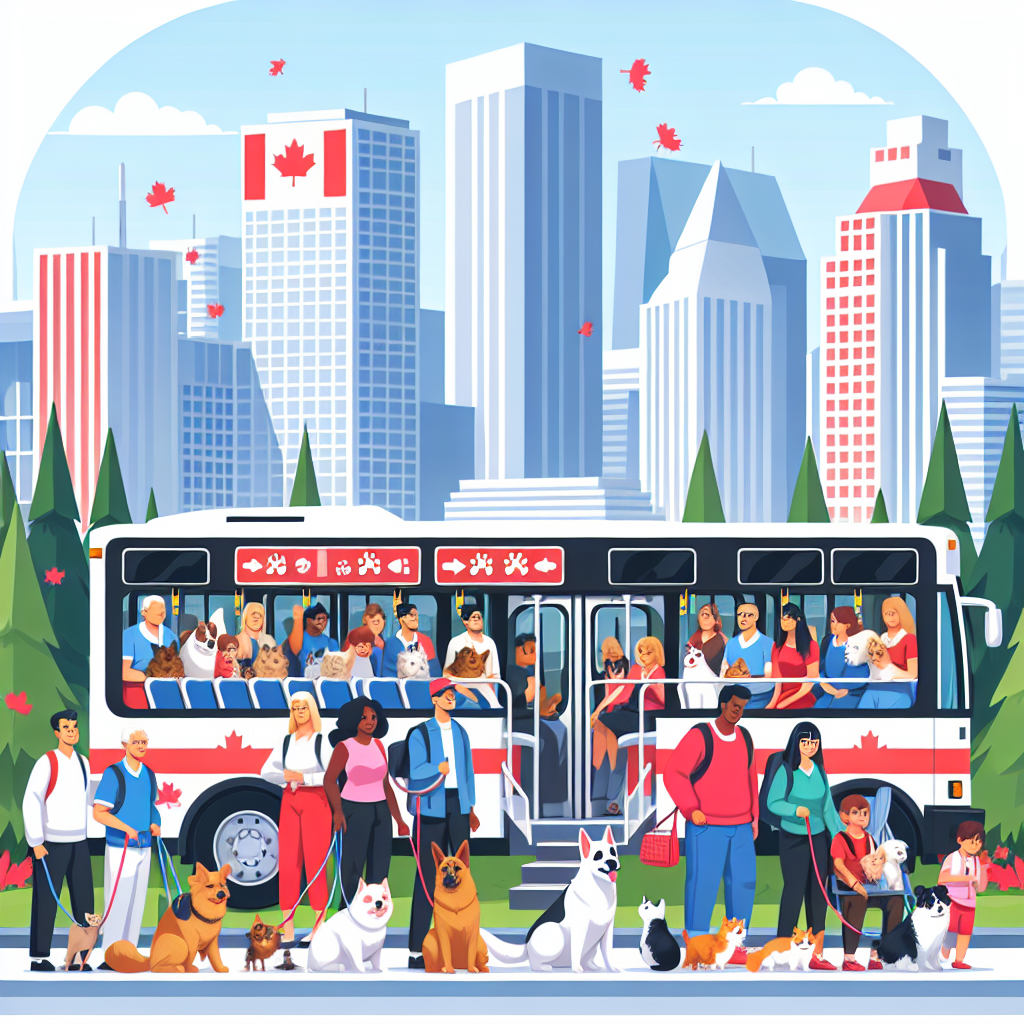===INTRO:===
Traveling with pets can be a thrilling yet daunting experience, especially when navigating public transport. In Canada, pet-friendly public transportation policies offer a beacon of hope for pet owners longing for inclusive travel options. The challenge of finding transit systems that accommodate four-legged companions can often lead to frustration—busy schedules, prohibitive policies, and the fear of leaving a beloved pet behind can weigh heavily on the heart. Understanding Canada’s pet-friendly public transport policies is crucial for any pet owner eager to embark on an adventure without leaving their furry friends behind.
Overview of Pet-Friendly Public Transport Policies in Canada
Across Canada, numerous public transportation systems have adopted pet-friendly policies, allowing pets to travel with their owners on buses, trains, and subways. Cities like Toronto, Vancouver, and Montreal lead the way with inclusive regulations that promote the idea that pets are part of the family. For instance, Toronto Transit Commission (TTC) permits small dogs in carriers, while larger pets can travel during off-peak hours on the city’s transit network. Montreal’s Société de transport de Montréal (STM) extends similar privileges, allowing pets during specified hours, making the city’s transport more accommodating.
However, the regulations can vary significantly from one municipality to another. In Calgary, for example, transit policies require pets to be on leashes and muzzled if they are not in a carrier. This variance can create confusion for pet owners traveling through different regions. Understanding these localized rules is essential for ensuring a smooth journey across the country’s public transit networks. This inconsistency can also lead to potential barriers for travelers who are unaware of the specific requirements in different cities.
Moreover, some regions have implemented innovative measures to enhance the experience for pet owners. For example, Vancouver’s TransLink has established special pet-friendly zones on specific bus routes, ensuring that both pets and humans can travel with ease. Initiatives like these highlight the growing recognition of the importance of including pets in urban mobility frameworks. Adapting transport services to be more pet-friendly reflects a broader societal shift towards inclusivity, allowing pet owners to enjoy the dynamic and diverse Canadian landscape with their companions.
Benefits and Challenges of Traveling with Pets on Transit
Traveling with pets on public transport offers an array of advantages, notably the strengthening of the bond between owners and their furry companions. The joy of sharing experiences with pets, whether it’s a trip to the park or a visit to regional attractions, enhances the overall travel experience. The ease of accessing public transit also eliminates the need for costly pet-sitting services or boarding facilities, making travel more affordable and less stressful for owners. For those who view their pets as integral parts of their lives, these policies have revolutionized how travel is approached.
On the flip side, challenges still abound for pet owners. Limited space on public transport can present a conundrum, particularly in busy urban settings where crowds are common. The anxiety of having to manage a restless or overly excited pet in such environments can deter some individuals from using public transit. Additionally, not all pets adapt well to travel, which can lead to stressful situations for both the owner and the animal. The fear of potential accidents or disruptions during a commute can ultimately discourage pet owners from taking full advantage of these policies.
Furthermore, while many transit systems have made strides towards inclusivity, there are still instances of pushback from other passengers. Some may have allergies or phobias towards animals, leading to discomfort during travel. This creates a delicate balance for transit authorities as they strive to accommodate pet owners while maintaining a comfortable atmosphere for all passengers. Education and clear communication about these policies, paired with training for staff to handle pet-related situations, can help alleviate concerns and foster a more harmonious travel environment.
===OUTRO:===
Navigating the landscape of pet-friendly public transportation policies in Canada reveals both significant advancements and notable challenges. As cities strive to accommodate the needs of pet owners, understanding these policies can empower travelers to make informed choices about their journeys. The emotional connection between pets and their owners is profound, and the ability to share travel experiences enhances the joy of adventure. To fully leverage the benefits of pet-friendly transit options, pet owners must stay informed about local regulations and engage positively with fellow travelers. By embracing the ongoing evolution of public transportation in Canada, we can create inclusive travel experiences that honor both people and their beloved pets. For more tips and insights on traveling with pets, consider exploring our additional resources or sharing your own experiences in the comments below!
Comprehensive Guide to Pet Hospice Care Services in CanadaExploring Pet-Friendly Vacation Rentals in OntarioExploring Canada’s Pet Nutritionists Specializing in Raw DietsRelevant LinkRelevant LinkRelevant LinkMeasuring Your Dog’s Height: A Comprehensive GuideUnderstanding How Dogs Become Infested with FleasUnderstanding the Lifespan of Pug Dogs: What to ExpectRelevant LinkRelevant LinkRelevant Link
